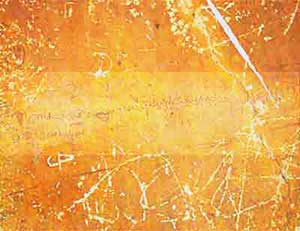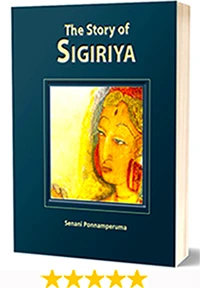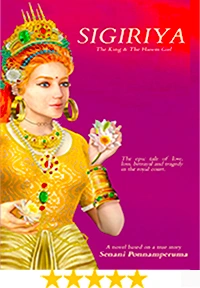Sigiriya (Sigiri) Graffiti

Photo: A section of graffiti at Sigiriya
Photo: Mirror Wall Where graffiti is found
The Sigiriya Graffiti dates from 600AD to 1400AD and consists of over 1800 pieces of prose, poetry, and commentary written by ancient tourists on the surface of the Mirror Wall at Sigiriya in Sri Lanka. Most graffiti refers to the beautiful paintings of the semi-nude females of the Sigiriya Frescoes that once covered most of the western surface of Sigiriya Rock. This graffiti confirms that this site was the residence of King Kashyapa, who ruled from 477 to 495 AD. The texts also suggest that the females depicted in the frescoes are the ladies of the king's royal court - the ladies of the harem. This graffiti offers a fascinating insight into the history of Sigiriya and the evolution of language in Sri Lanka over 800 years. The graffiti range from statements of awe, declarations of love, commentary, curses, laments, diary entries, or mere statements of visit ("I was here"). Many demonstrate a very high level of literacy and a deep appreciation of art and poetry.
Written in a Sinhala, Sanskrit and Tamil, these early scribblers have left us priceless insights into the past. Of the six hundred and eighty-five individuals identified so far, twelve were women, over half identified themselves by name, many noted their social rank, and some even mentioned where they came from—towns like Weligama and Ritigala. The majority of these visitors appear to have been from the elite of society: royalty, officials, professions, and clergy. There were also soldiers, archers, and even metalworkers. Over 1000 unique words have been identified.
Sigiriya was the royal capital city of King Kashyapa for only about ten years. It was abandoned soon after the king's death and the royal citadel was converted into a monastery. There are no graffiti on the Mirror Wall prior to the sixth century. This suggests that visitors did not have access to the site for about a hundred years after Sigiriya was abandoned and converted into a monastery. As the monastery fell into hard times, it may have supplemented its income by allowing visitors and pilgrims to see the rather titillating Sigiriya Frescoes.
One reads "Hail! I am Vira-vidura Bato. I wrote this..".
Wet with cool dew drops
fragrant with perfume from the flowers
came the gentle breeze jasmine and water lily
dance in the spring sunshine
side-long glances of the golden hued ladies stab into my thoughts
heaven itself cannot take my mind
as it has been captivated by one lass
among the five hundred I have seen here.
Another extols:
The girl with the golden skin enticed the mind and eyes
Ladies like you make men pour out their hearts
And you also have thrilled the body
Making it stiffen with desire.
A female visitor wrote:
A deer-eyed maiden of the mountain side arouses anger in my mind.
In her hand she holds a string of pearls,
and in her eyes she assumes rivalry with me..
A mention of five hundred frescoes.
The five hundred damsels arrest the progress of him who is going to heaven.
With their gentle smile and the fluttering of their eye-lids, the damsels stood here,
enslaved me who had come to the summit of the cliff..

